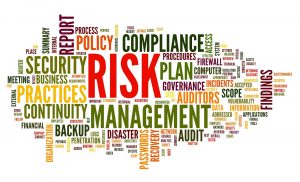
In today’s digital landscape, the threat of ransomware attacks looms large over individuals, businesses, and organizations alike. Ransomware attacks can cripple systems, compromise sensitive data, and lead to financial losses. However, having a well-defined response plan in place can significantly mitigate the impact of such attacks. In this article, we will walk you through the steps to effectively respond to a ransomware attack, from prevention to recovery.
Prevention is Key
The first line of defense against ransomware attacks is prevention. Implementing robust security measures can significantly reduce the likelihood of an attack. Here are some key preventive steps to consider:
Regular Backups: Regularly backup your critical data and systems to offline or cloud-based storage. This will allow you to restore your data in case of an attack without paying the ransom.
Patch Management: Keep your operating systems, software, and applications up to date with the latest security patches. Vulnerabilities in outdated software can be exploited by ransomware.
Employee Training: Educate your employees about the dangers of phishing emails and social engineering tactics. Human error is a common entry point for ransomware attacks.
Network Segmentation: Separate your network into segments to limit lateral movement of ransomware. This way, if one segment is compromised, the entire network won’t be affected.
Antivirus and Anti-Malware: Utilize reputable antivirus and anti-malware solutions to detect and block ransomware threats.
Detection and Containment
Despite preventative measures, attacks can still occur. Rapidly detecting and containing the ransomware can minimize its impact. Here’s what to do:
Isolation: As soon as you suspect an attack, isolate the affected systems from the network to prevent the ransomware from spreading.
Investigation: Determine the extent of the attack, including the affected systems, the type of ransomware, and the entry point. This information will be crucial for your response strategy.
Response Strategy
Crafting a well-thought-out response strategy is crucial to effectively manage the aftermath of a ransomware attack:
Communicate Internally: Alert your internal IT team and key stakeholders about the attack. Establish clear lines of communication to ensure everyone is on the same page.
Engage External Help: Contact law enforcement and cybersecurity experts to assist in investigating the attack. They can provide insights and guidance on next steps.
Assess Legal Obligations: Consult with legal experts to understand any legal obligations you might have in terms of reporting the attack or potential data breaches.
Recovery
Recovering from a ransomware attack involves restoring your systems and data while minimizing downtime:
Data Restoration: Restore your systems using the most recent backups. Ensure that the backups are clean and free from any traces of ransomware.
System Hardening: Before bringing systems back online, thoroughly review and strengthen your security measures to prevent future attacks.
Employee Training: Reinforce cybersecurity training for your employees. Learn from the attack and educate your staff on how to recognize and respond to suspicious activity.
Post-Incident Analysis
Once the immediate crisis is under control, conduct a thorough post-incident analysis:
Root Cause Analysis: Identify how the attack occurred and what vulnerabilities were exploited. This information will guide your future security enhancements.
Lessons Learned: Document the lessons learned from the attack and adjust your response plan accordingly. Continual improvement is essential for effective cybersecurity.
Responding to a ransomware attack requires a combination of preparation, swift action, and collaboration with experts. By following these steps, you can minimize the impact of an attack, ensure the safety of your data, and strengthen your organization’s resilience against future threats. Remember, the key to successful ransomware response lies in prevention, preparedness, and a well-executed strategy.